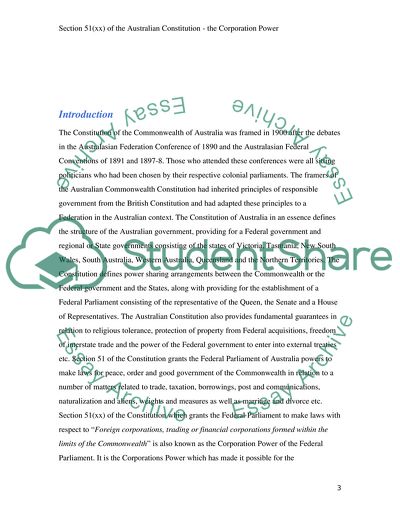Cite this document
(“Discuss s 51(xx) of the Australian Constitution - the Corporation Essay”, n.d.)
Retrieved from https://studentshare.org/miscellaneous/1534963-discuss-s-51xx-of-the-australian-constitution-the-corporation-power
Retrieved from https://studentshare.org/miscellaneous/1534963-discuss-s-51xx-of-the-australian-constitution-the-corporation-power
(Discuss S 51(xx) of the Australian Constitution - the Corporation Essay)
https://studentshare.org/miscellaneous/1534963-discuss-s-51xx-of-the-australian-constitution-the-corporation-power.
https://studentshare.org/miscellaneous/1534963-discuss-s-51xx-of-the-australian-constitution-the-corporation-power.
“Discuss S 51(xx) of the Australian Constitution - the Corporation Essay”, n.d. https://studentshare.org/miscellaneous/1534963-discuss-s-51xx-of-the-australian-constitution-the-corporation-power.


